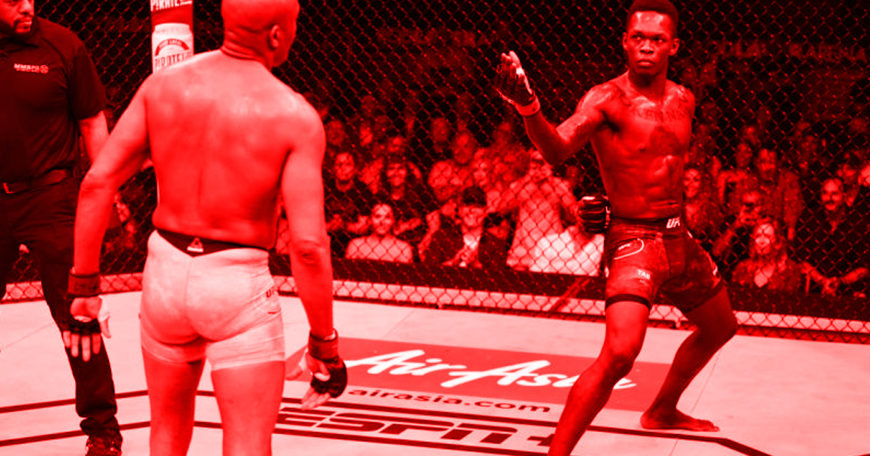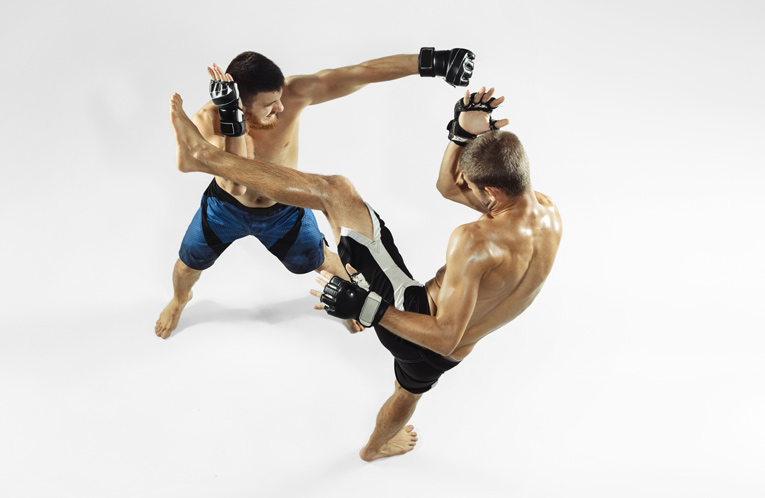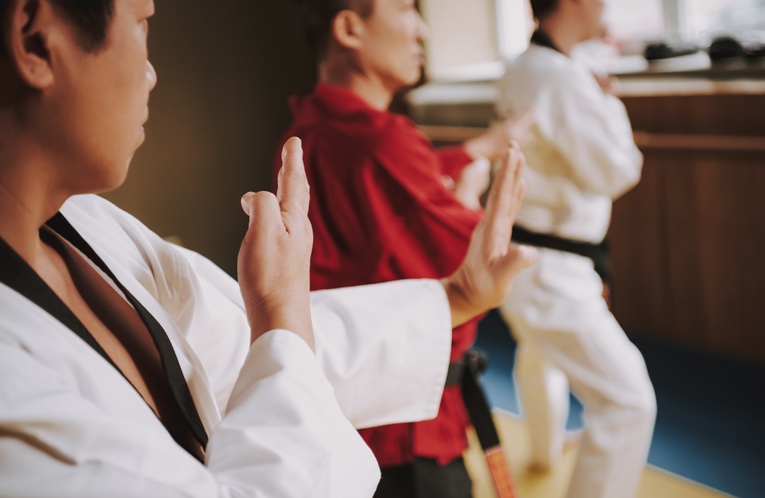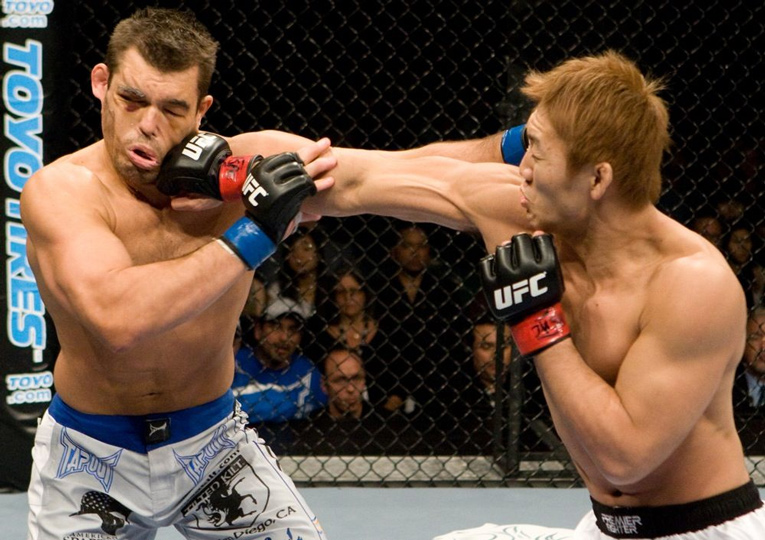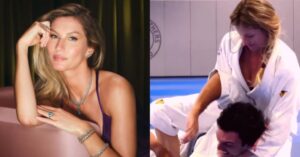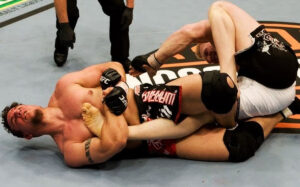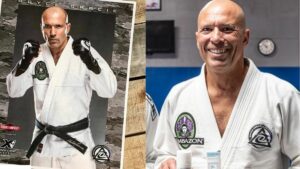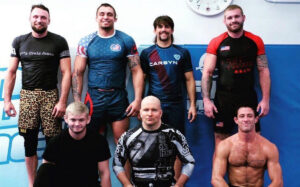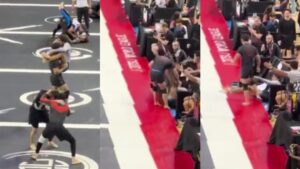“A house built on a shaky foundation will eventually collapse.” – Toni Payne.
Every martial art has a primary stance that each student must master before any real progression can begin. Having the right stance can improve power, speed and defense. Ignoring its importance can mean slow defense and movement as well as making you more likely to become off-balanced, whether that’s from a strike, sweep or takedown.
The stance is an incredibly overlooked aspect of training. It is taught to varying depths to new students, but it is rarely revisited later on down the line. And perfection isn’t necessarily something practitioners aspire to. It is, admittedly, quite a boring aspect of martial arts. But, if students truly want to strive for perfection, then the stance must not be overlooked.
The stance is the basis of all movements. It is the foundation that will be tested, undeniably, during a fight. The perfect stance involves a kinetic chain that allows you to produce force, attack or defend smoothly and, ultimately, ensures that your whole body mass is behind a strike. It’s a common misconception that we punch from the shoulders, for example, when in actuality, the best boxers are using their legs, hips and torso to power that punch. For this reason it’s important to pay attention to every component of the stance from the feet to the head.
The best stance for you will vary depending on the specific needs of your chosen discipline, but there are a few things everyone can focus on improving:
1. Foot Positioning
A solid foundation begins with the feet. Your connection with the floor is paramount to your striking power as well as your ability to move quickly.
Firstly, your feet should be staggered. A staggered stance is used because when the feet are parallel to each other, it is far easier to be thrown off balance. This is true for any situation, but will become especially evident in martial arts when there are so many aspects that will test your balance in both striking and defending.
Your dominant side, also known as your power side, will be placed behind you. Most people are right handed, so their right foot will be in the back and their left will be in the front. As the majority of fighters use this stance, it is known as ‘orthodox’. If you are left handed, you will do the opposite and have your left foot in the back. This is called ‘southpaw stance’.
The feet should be placed about shoulder width apart, slightly wider than the hips. The front foot should be flat on the floor (some like to angle it slightly inwards), while the back foot should have the heel slightly raised off the floor, with the ball of the foot pressing down into the ground. This allows you to move a little quicker than if you were completely flat footed. In most situations, it is advised not to be completely flatfooted, however there are situations where this is necessary, such as using long range defensive pushkicks. In this instance, the flat foot in the back (usually turned out 180 degrees) allows for a very powerful kick that creates enough force to send an opponent across the ring.
Try to distribute your weight evenly between both legs as a general rule, but note that some sports, or even in certain ranges, a 60/40 weight distribution to the back leg is also advised. This largely depends on what kicks are allowed and to where. For example, the lower portion of the leg is not targeted in kickboxing, but it is in Thai boxing. Therefore, too much weight in the lead leg will make it hard to defend strikes to this area, so a 60/40 distribution is favoured in Muay Thai, whereas a 50/50 distribution is suitable for kickboxing.
The two best ways to check the stability of your stance is to have a partner or coach push you or try to move you out of it. If your feet are too narrow, you will be easily moved and your feet will naturally try to gain balance by widening the stance in both or either direction. This widened version, although possibly exaggerated, is a much more accurate depiction of where your natural stance should be. If your feet are too wide, just adjust them so that they are within shoulder width. This exercise should help you to find a very solid base to start from.
The second method is to check your weight distribution. You should be able to comfortably lift the lead leg up to hip height, whether that is for a block or a kick. Too much weight in the front leg will make this movement slow, clumsy, or unbalanced.
2. Torso Positioning
The torso, especially the obliques will be used when punching, kicking and rolling. For this reason, the core should always be engaged in your stance. The core involves the abdominals and obliques, but it also includes your back, hips and glutes. To engage the core, contract and slightly pull in your abs. This also helps to reduce impact when struck in this area, as you are already braced for it.
The shoulders should be slightly forward. This creates a slightly concave look, but is useful for two reasons. One, it positions your arms and guard incrementally closer to an opponent. Two, it creates the illusion that you are closer to your opponent than they think, which hopefully makes them miss or misjudge either distance. Fights are often won or lost by increments, so never doubt the potential in incremental adjustments and gains.
3. Guard Positioning
The fists can be clenched or unclenched depending on fight style, but more often than not, they should be clenched quite tightly, even when in gloves. This makes the knuckles more pronounced while also tightening the forearms. This not only braces the arms for impact when blocking, but also makes it harder for the guard to be pulled down in an attack. Loose guards are easily manipulated and exploited.
The rear hand should be at the same height as the cheekbone/temple area and no further than an inch away from the face. Hold it to the side of the head. This arm will remain close to the body to protect the liver and block hooks or kicks to the head. The closer the arm is to the body, the quicker it will be able to protect the target area.
The lead hand should be at a similar height, below the eye socket, so that it does not interrupt your vision and can be held anywhere from 3-5 inches away from the face. Keep this fist just off the centre line, in front of your face.
Elbows should point down to the floor, or can be tilted out slightly, however flaring the elbows too much leaves too large of a gap between the arm and the body which opens you up to become more susceptible to attack.
4. Head Positioning
The most important piece of advice regarding the position of the head is to keep the chin down. “Chinny” fighters are more likely to get knocked out. Your chin is like a lever and when hit, causes the head to turn, which can lead to a concussion.
Keeping the chin down shortens this lever, meaning that you have more control over your head movements and are less likely to get knocked out. In addition, it lowers the angle of the nose, thus reducing the likelihood of breakage.
The eyes should always be on the opponent. Some people like direct eye contact, but shifting the gaze a little lower, to the chest or sternum can give you a better view of the legs if you are doing a martial art that involves kicking as well. Great caution must be taken to maintain this eye contact throughout the fight. Never turn your back or eyes away from the opponent.
5. Footwork
Ensure you are in your stance as often as possible. Striking and moving will affect it, but get used to bringing your hands back to your head and an even weight distribution to your feet every time you have a chance to reset. To the best of your ability, avoid crossing your feet. This puts you at risk of being swept or thrown off balance.
Conclusion
The best way to improve your stance is to dedicate more time to practicing it. Find the foot placement that allows you to deliver powerful shots, as well as move quickly out of the way. Build up the strength in your feet and legs so you never have to worry about them fatiguing.
Test your guard position with a training partner, ensuring it is easy to both attack and defend. And keep your chin down and head moving. This will make you harder to hit.
There are many ways to improve your guard but it is often a process of experimentation. No one size fits all, and martial arts discipline as well as individual fight style will all need to be taken into consideration. Regardless, the stance is the foundation of your striking and will be constantly tested. Whether you are a beginner or an experienced martial artist, ensure you have a solid foundation from which to build your craft.

